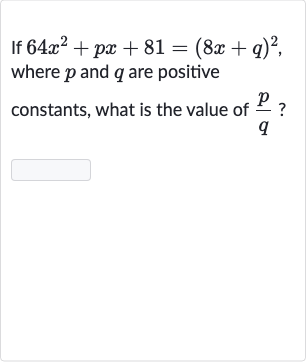Full solution
Q. If , where and are positive constants, what is the value of ?
- Expand equation: We have the equation: Expand the right side of the equation to get .
- Compare coefficients: Compare the coefficients of the corresponding terms on both sides of the equation. We have on both sides, so they match. Now, compare the linear term and the constant term. We have on the left side and on the right side, so . For the constant terms, we have on the left side and on the right side, so .
- Find : Since and is a positive constant, we take the positive square root of to find . Therefore, .
- Find : Substitute into the equation to find the value of . So, .
- Calculate : Now that we have both and , we can find the value of . So, . Simplify the fraction to get the final value of . Therefore, .
More problems from Factor sums and differences of cubes
QuestionGet tutor help
QuestionGet tutor help

